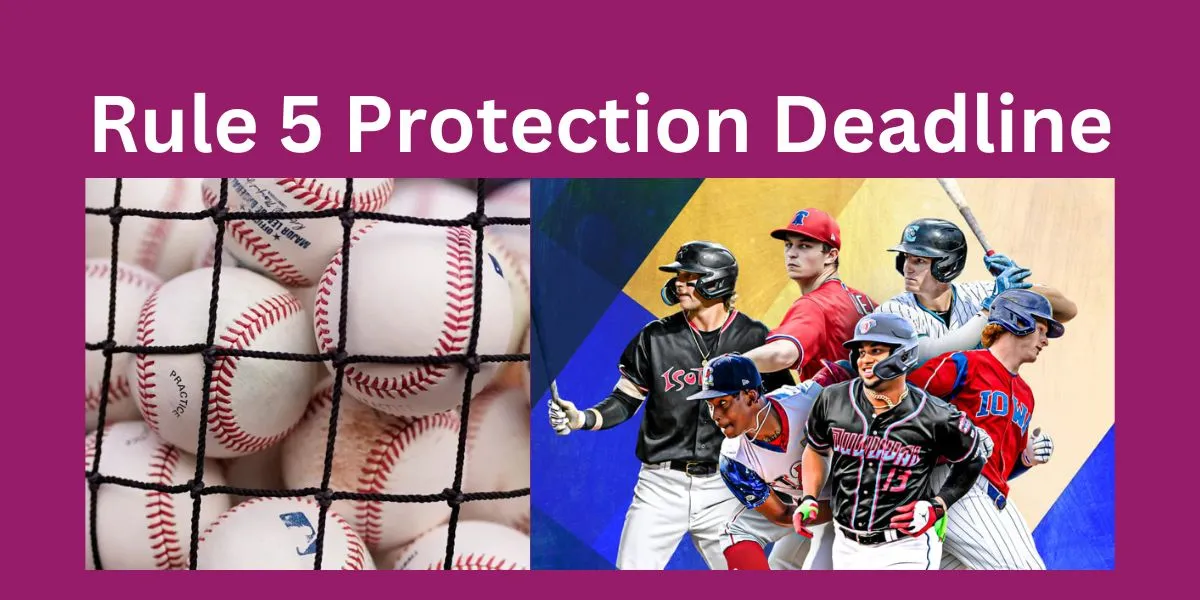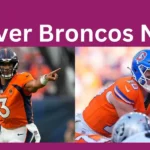If you’re a baseball fan or work in Major League Baseball (MLB), you’ve likely heard the term “Rule 5 protection deadline.” It might sound like some legal jargon or a complicated rule, but don’t worry—it’s not as intimidating as it seems. Let’s dive into what this deadline means, why it exists, and how it affects teams, players, and the game itself.
What Is the Rule 5 Draft?
Before we get into the protection deadline, let’s cover the basics: what is the Rule 5 Draft?
The Rule 5 Draft is an annual event in MLB that allows teams to draft certain players from other organizations’ minor league systems. This gives players a chance to break into the big leagues and ensures teams can’t hoard talent indefinitely.
Why Does It Exist?
The draft was created to balance competition and promote fairness. It prevents MLB teams from stashing talented minor leaguers who might otherwise have a shot at playing in the majors. Think of it as a system to level the playing field.
Breaking Down the Rule 5 Protection Deadline
What Is It?
The Rule 5 protection deadline is the date by which MLB teams must add eligible minor league players to their 40-man roster to protect them from being selected in the Rule 5 Draft.
When Does It Happen?
Typically, the deadline occurs in mid-November. Teams scramble to assess their minor league talent and decide which players deserve protection.
Who Is Eligible for the Rule 5 Draft?
Not every minor leaguer can be taken in the draft. Eligibility is based on the number of years a player has been in professional baseball:
- Players signed at 18 or younger: Eligible after five seasons.
- Players signed at 19 or older: Eligible after four seasons.
Why Does Eligibility Matter?
Eligibility determines which players teams need to protect. If a player meets the criteria and isn’t added to the 40-man roster by the deadline, they become fair game in the Rule 5 Draft.
How Do Teams Decide Who to Protect?
Evaluating Talent
Teams evaluate:
- Potential: Could this player contribute to the big league roster soon?
- Performance: How have they performed in the minors?
- Positional Needs: Does the team need depth in their position?
Weighing the Risks
Teams have to make tough calls. Protecting a player means using one of the 40 roster spots, which are highly valuable. However, leaving a promising prospect unprotected risks losing them to another team.
How Does the Rule 5 Draft Work?
Draft Process
During the draft, MLB teams select players from other organizations in reverse order of the previous season’s standings.
What Happens to Drafted Players?
If a team drafts a player, they must:
- Keep them on their MLB active roster for the entire season.
- If they don’t, they must offer the player back to their original team.
Impact of the Rule 5 Protection Deadline
On Teams
Teams face a balancing act. They must prioritize protecting their most valuable prospects while maintaining flexibility on their roster.
On Players
For minor leaguers, the protection deadline can be a career-defining moment. Getting added to a 40-man roster is a step closer to the MLB dream.
Examples of Rule 5 Success Stories
Some big names in baseball were once Rule 5 picks:
- Johan Santana: Two-time Cy Young Award winner.
- Josh Hamilton: Former MVP.
- Dan Uggla: Three-time All-Star.
These players are proof that the Rule 5 Draft isn’t just a formality—it can uncover hidden gems.
What Happens if a Player Isn’t Protected?
Players left unprotected might feel a mix of disappointment and opportunity. On one hand, it’s a sign their current team doesn’t see them as a top priority. On the other, they might land on a team where they have a better shot at making the majors.
The Clock Is Ticking: What Teams Do Before the Deadline
Roster Shuffling
Teams often make trades or release players to clear space on their 40-man roster.
Scouting and Analysis
General managers, scouts, and player development staff analyze stats, projections, and future needs.
Why Fans Should Care About the Rule 5 Protection Deadline
For fans, this deadline offers a glimpse into the future of their favorite teams. It’s a chance to see which prospects the organization values most and how they’re planning for success.
Common Misconceptions About the Rule 5 Deadline
It’s Just for Small-Market Teams
While smaller-market teams often benefit more, every MLB team participates. Even powerhouse teams sometimes find valuable players.
It’s Only for Low-Level Players
Not true! Many Rule 5 eligible players are in Triple-A, just one step away from the majors.
Challenges Teams Face During the Rule 5 Protection Deadline
Roster Crunch
With only 40 spots available, teams must make sacrifices. Sometimes they let go of veterans to protect younger talent.
Predicting Player Development
It’s impossible to predict with certainty how a player will develop. Teams have to take calculated risks.
The Bigger Picture: How the Deadline Shapes the Game
The Rule 5 protection deadline isn’t just about individual players—it’s about the future of baseball. It helps ensure that talent isn’t wasted and gives underdog players a chance to shine.
Conclusion
The Rule 5 protection deadline might not grab headlines like Opening Day or the World Series, but it’s a crucial part of MLB’s ecosystem. It forces teams to make tough decisions, opens doors for players, and keeps the game competitive. So, the next time mid-November rolls around, keep an eye on those 40-man rosters—you might just spot the next big thing.
FAQs
1. What happens if a Rule 5 pick doesn’t stay on the MLB roster?
If a Rule 5 pick isn’t kept on the MLB active roster for the entire season, the drafting team must offer them back to their original team.
2. Can players refuse to be part of the Rule 5 Draft?
No, players don’t have a say. If they’re eligible and unprotected, they can be drafted.
3. Do Rule 5 Draft picks get paid more?
Yes, if selected, Rule 5 players earn the MLB minimum salary while on the active roster, which is higher than minor league salaries.
4. Can teams trade Rule 5 Draft picks?
Yes, teams can trade the rights to Rule 5 picks, but the same roster requirements apply to the new team.
5. What’s the difference between the Rule 5 Draft and the Amateur Draft?
The Rule 5 Draft involves players already in professional baseball, while the Amateur Draft selects players from high schools, colleges, or international markets.










